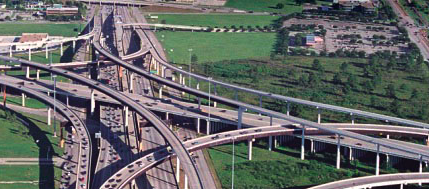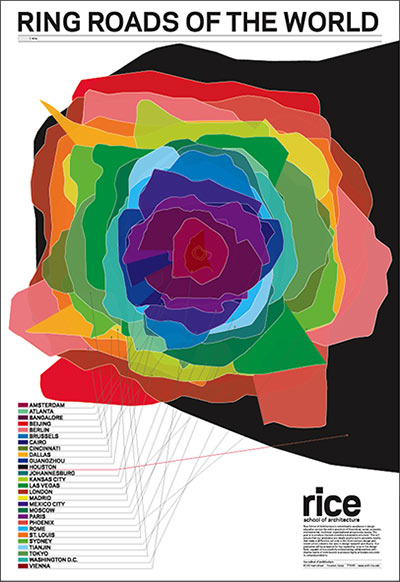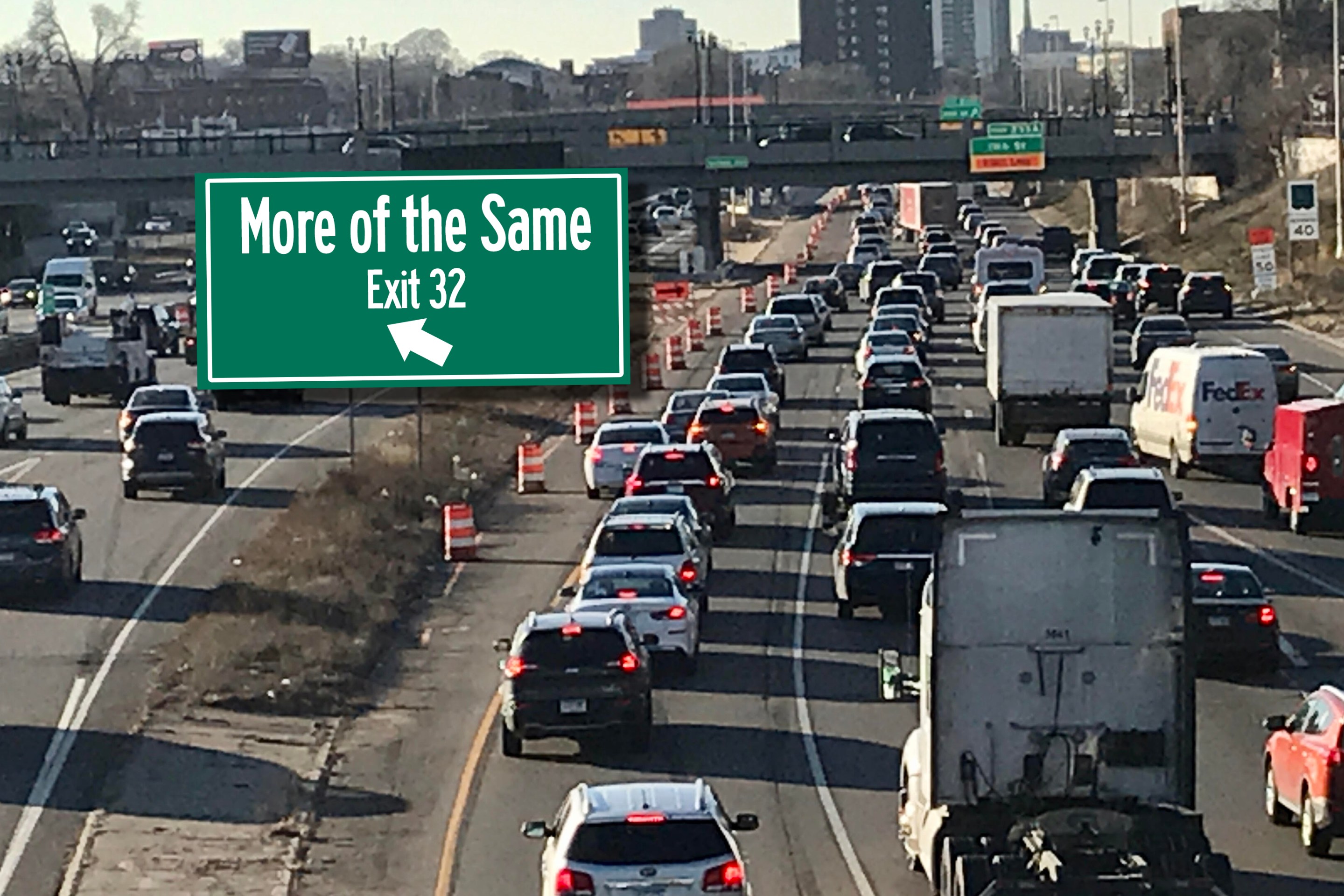
Who can build the biggest road slab the fastest? Those seem to be the major criteria used by the American Association of State Highway and Transportation Officials to determine the "best" projects by state DOTs across the country.
In another sign that most state Departments of Transportation should still be called "highway departments," there are no transit projects on AASHTO's "top 10" projects list this year. The closest thing to one is California's Oakland-Bay Bridge, which was "built to accommodate future expansions in light rail, bus, and other modes of transportation."
Many of the projects listed are bridge repairs (and emergency bridge repairs), which are important. But the list is also larded with highway expansions.
In Ohio, AASHTO showers praise on a $200 million project to bypass the town of Nelsonville, population 5,400. The project earned a nod for "reliev[ing] a major congestion problem" in rural southeast Ohio.
The most ludicrous selection is probably Segment E of Houston's Grand Parkway. This is a $320 million portion of a proposed 185-mile third outerbelt for the city. Proponents of the project have openly admitted it is more about inducing sprawl than addressing any transportation problem. The Texas Department of Transportation, mired in financial woes, has allowed real estate interests in Houston to more or less dictate where money will be spent. Whether the state will be able to find the funds to complete the $5.4 billion loop is an open question.

It seems that the actual merit of a project is not the key issue here, but rather the state's ability to build something quickly and under budget. AASHTO gives credit in two instances for projects being completed before schedule and two are praised for coming in under budget. In some instances, like Houston's Grand Parkway, the agency doesn't even explain why it was chosen. AASHTO only says that it will reduce congestion on other Houston highways. That's a questionable assertion at best, given that the project is likely to bring on a new wave of low-density sprawl.
The report is co-sponsored by AAA and the U.S. Chamber of Commerce. You can vote for your favorite project here. Two winners will be honored.





